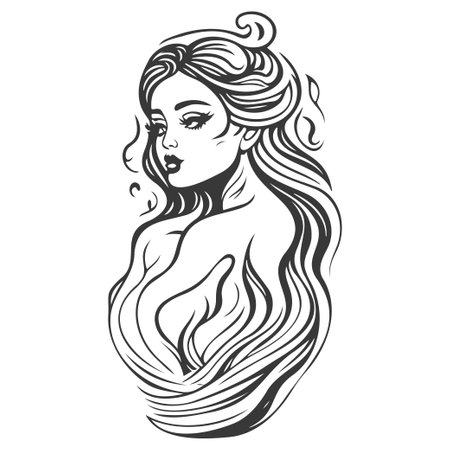Understanding Why Hair Dye Disasters Happen
Before you can fix a hair dye disaster, it’s important to know what actually went wrong. Whether you tried an at-home box dye or left the salon feeling like your hair color dreams turned into a nightmare, you’re not alone—these mishaps happen more often than you think. Let’s break down the most common reasons behind hair coloring fails so you can pinpoint exactly where things took a wrong turn.
Common Causes of Hair Dye Disasters
| Cause | Description | Typical Scenario |
|---|---|---|
| Choosing the Wrong Shade | The color on the box or sample swatch looks different on your actual hair due to natural undertones and previous color history. | You wanted cool ash blonde, but ended up with brassy orange highlights after using a box dye at home. |
| Improper Application | Poor sectioning, uneven product distribution, or missing spots leads to patchy or streaky results. | Your roots look lighter than your ends, or there are missed patches behind your ears. |
| Not Considering Hair History | Previous dyes, bleach, or even henna can react unpredictably with new color applications. | You used a dark brown dye over previously bleached hair and got greenish tones instead of neutral brown. |
| Mismatched Expectations at the Salon | Miscommunication between you and your stylist about shade, technique, or maintenance leads to unwanted results. | You asked for “subtle caramel balayage” but left with chunky blonde streaks that feel too bold. |
| Leaving Dye On Too Long (or Not Long Enough) | Over-processing can cause damage and extreme color shifts; under-processing leaves color weak or uneven. | You lost track of time and now your hair is way darker than you planned—or barely changed at all. |
| Skipping Strand Tests | Not testing dye on a small section first means you don’t see how your specific hair will react. | You applied a vivid red directly to all your hair and ended up with unexpected hot pink in some areas. |
How Your Hairs Unique Traits Affect Color Results
Every head of hair is different. Factors like porosity (how well your hair absorbs moisture), thickness, previous chemical treatments, and even water quality in your area can change how dye develops. For example, porous or damaged hair grabs onto color much faster—and sometimes unevenly—while “virgin” hair might resist color and need extra processing time. Understanding these traits helps you avoid future disasters and makes it easier to explain what happened when seeking help from a pro.
2. Assessing the Damage: What’s Your Hair Telling You?
Before you jump into fixing your hair dye disaster, it’s super important to figure out exactly what went wrong. Every dye mishap is a little different, so understanding your hair’s current condition will help you pick the best color correction plan—and avoid making things worse!
Common Signs of Hair Dye Disasters
Your hair can show a bunch of different signs when something goes wrong with color. Here’s how to spot the main issues:
| Problem | What It Looks Like | What It Means |
|---|---|---|
| Color Inconsistencies | Patches of uneven color, some strands lighter or darker than others | The dye didn’t take evenly—could be from product build-up, uneven application, or missed spots. |
| Brassiness | Orange, yellow, or red tones showing up where they shouldn’t | Your natural pigments are peeking through, often after lightening dark hair. |
| Patchiness | Splotches of color or visible lines between shades | Dye wasn’t applied smoothly or processed evenly. |
| Texture Changes | Hair feels dry, brittle, gummy, or stringy | The dye has damaged your hair’s protein structure—be careful before applying more chemicals! |
How to Evaluate Your Hair at Home
- Look in natural light: Indoor lighting can hide problems—step outside to see the real color and any inconsistencies.
- Feel your hair: Run your fingers through. Does it feel rough or sticky? That means damage has happened.
- Check your scalp: Redness, itching, or burning could mean irritation from chemicals—give your scalp a break before doing more treatments.
- Compare roots and ends: Is the color even from top to bottom? If not, you might need a two-step fix.
- Snap a photo: Sometimes seeing your hair in a picture makes issues like patchiness stand out more clearly.
If You’re Unsure—Don’t Guess!
If you really can’t tell what’s wrong or if your hair feels super fragile, don’t guess. It might be time to get advice from a pro stylist—sometimes DIY fixes can make things worse if you don’t know exactly what you’re working with.

3. DIY First Aid: Immediate Steps to Minimize Damage
So, your hair color didn’t turn out as planned—don’t panic! Before booking a pricey salon appointment, there are a few quick fixes you can try at home to minimize the damage and maybe even save your strands. These first aid steps use products you can find easily at American drugstores like CVS or Target.
Clarifying Shampoos: Your First Line of Defense
If your color is too dark, muddy, or just plain wrong, reach for a clarifying shampoo. These shampoos are designed to strip away product build-up—and they can also help fade unwanted dye. Wash your hair a couple of times in a row, letting the lather sit for 2-5 minutes before rinsing thoroughly. Just be sure to follow up with a hydrating conditioner since clarifying shampoos can be drying.
Popular Clarifying Shampoos (Available at CVS/Target)
| Brand | Product Name | Main Benefit |
|---|---|---|
| Neutrogena | Anti-Residue Shampoo | Deep cleansing, gentle on scalp |
| Sulfate-Free Option | SheaMoisture Power Greens Shampoo | Cleanses without harsh sulfates |
| TRESemmé | Deep Cleanse Shampoo | Removes excess color & buildup |
Color Removers: When You Need a Stronger Fix
If clarifying shampoo isn’t enough, look for an over-the-counter color remover. These kits are made for those “oops” moments and are usually found in the hair dye section. They’re designed to shrink dye molecules so you can wash them away—just follow directions closely to avoid extra damage.
Top Drugstore Color Removers
| Brand | Product Name | Main Benefit |
|---|---|---|
| LOréal Paris | Colorista Haircolor Remover | Works on semi-permanent dyes, easy to use at home |
| Color Oops | Extra Strength Color Remover | Tackles permanent and semi-permanent dyes |
| One n Only | Colorfix Hair Color Remover Kit | Removes unwanted color without ammonia or bleach |
At-Home Treatments for Post-Dye Damage Control
Dyeing can leave your hair feeling rough or brittle. After using clarifying shampoos or color removers, pamper your hair with masks and deep conditioners. Look for nourishing ingredients like shea butter, coconut oil, or keratin—these will help restore moisture and shine while minimizing breakage.
Quick Picks for Damaged Hair Repair (Find these at CVS/Target)
- Aussie 3 Minute Miracle Moist Deep Conditioner – Hydrates and softens dry hair fast.
- SheaMoisture Raw Shea Butter Restorative Conditioner – Loaded with shea butter for intense moisture.
- Pantene Pro-V Intense Rescue Shots – Single-use ampoules to revive stressed hair instantly.
- Maui Moisture Heal & Hydrate + Shea Butter Hair Mask – Great for curls and waves that need TLC.
No matter which quick fix you choose, always check the product labels and do a patch test if you have sensitive skin or scalp issues. And remember—these solutions won’t magically fix every dye disaster, but they’re solid first steps until you decide on your next move!
4. Salon Solutions: When to Call in the Pros
Sometimes, no matter how many DIY tricks you try, your hair dye disaster just won’t budge—or worse, it keeps getting messier. In those moments, its time to think about heading to a professional salon for color correction. But when should you call in the experts, and what actually happens during a color correction appointment in the U.S.? Here’s everything you need to know.
When Should You See a Professional Colorist?
It can be tempting to keep fixing your hair at home, but there are clear signs that it’s time for pro help:
| Situation | Why You Need a Pro |
|---|---|
| Your hair turned out way darker or lighter than expected | Color balancing is tricky and requires professional formulas |
| You have uneven patches or streaks of color | A colorist can blend and even out tones seamlessly |
| Your hair feels damaged or straw-like after dyeing | Salons offer bond-building and restorative treatments |
| You tried to go from dark to light (or vice versa) and it looks orange, green, or brassy | Correcting undertones usually needs salon-grade products and expertise |
| You’ve used box dye multiple times with poor results | Layered dyes can react unpredictably—pros know how to safely remove or neutralize them |
What Happens During a Color Correction Service?
If you decide to book an appointment, here’s what to expect in an American salon:
- Consultation: Your colorist will ask about your hair history and assess the damage. Be honest—this helps them plan the safest route.
- Strand Test: Before applying anything all over, they might test a small section to predict results.
- Treatment Plan: Depending on your situation, they may use clarifying treatments, color removers, toners, or multiple dye sessions.
- Bond-Building Products: Many U.S. salons use products like Olaplex or K18 to protect your hair during processing.
- Aftercare Advice: Expect tips on shampoos, conditioners, and masks specifically for color-treated hair.
How Long Does It Take?
Color correction isn’t always a quick fix. Some appointments last several hours or require more than one visit. Patience is key!
How Much Does It Cost?
The price varies widely by location, salon reputation, and how much work needs to be done. Here’s a general idea:
| Service Type | Typical Price Range (USD) |
|---|---|
| Toner/Gloss Only | $50 – $100+ |
| Full Color Correction (Multiple Steps) | $150 – $400+ |
| Add-on Treatments (Olaplex/K18) | $20 – $60 per treatment |
Pro Tip:
If you’re worried about cost, ask for an estimate before booking—and remember that investing in professional help often saves money (and your hair!) in the long run.
5. Popular Color Correction Techniques Explained
If you’re dealing with a hair dye disaster, don’t panic—American salons have plenty of tried-and-true color correction techniques that can bring your hair back to life. Here’s a breakdown of the most popular methods, what they involve, and when each one is usually recommended.
Color Stripping (Color Remover)
What it is: A chemical process that pulls out artificial color from your hair without lightening your natural shade.
When to use: If your hair turned out way darker than expected or you want to remove an unwanted hue completely.
Pros: Fast results; works on most permanent and semi-permanent dyes.
Cons: Can be drying; may leave behind some uneven tones that need further correction.
Quick Comparison: Color Stripping vs. Bleaching
| Method | Main Purpose | Best For | Pitfalls |
|---|---|---|---|
| Color Stripping | Remove artificial color only | Dye gone too dark or wrong shade | Can dry out hair, sometimes leaves patchy spots |
| Bleaching | Lighten both natural and dyed hair pigment | Going much lighter or prepping for new vivid colors | High risk of damage and breakage if overused |
Toning
What it is: Using a toner (usually a demi-permanent dye) to adjust unwanted undertones like brassiness or greenish hues.
When to use: After bleaching or stripping, or whenever you see off-tones in blonde, brunette, or even pastel shades.
Pros: Gentle on hair; fixes color fast; adds shine.
Cons: Results are temporary and may need touch-ups every few weeks.
Balayage Blending
What it is: Hand-painting highlights onto sections of hair for a soft, natural blend between different colors.
When to use: If your roots are harsh, or there’s a clear line between old and new dye jobs.
Pros: Grows out gracefully; less maintenance than full-head dyeing.
Cons: Won’t cover severe color mishaps; needs skillful hands for best results.
Root Shadowing (Root Smudge)
What it is: Applying a slightly darker shade at the roots and blending it downwards, making regrowth look intentional and seamless.
When to use: To soften the contrast between colored lengths and natural regrowth, especially after a botched bleach job.
Pros: Low-maintenance; gives a lived-in, salon-fresh look.
Cons: Not for those who want a super-bright root-to-tip finish.
The Right Technique for Your Situation
| Your Hair Situation | Savior Technique(s) | Main Benefit |
|---|---|---|
| Darker than expected all over | Color Stripping + Toning | Lifts excess color & corrects undertones quickly |
| Bands of uneven color or “hot roots” (bright roots vs. dark ends) | Toning + Root Shadowing/Smudge | Evens out color transitions & softens regrowth lines |
| Patches or streaks from DIY mistakes | Toning + Balayage Blending | Masks patchiness with blended highlights/lowlights |
| Brittle, overprocessed blonde with brassiness | Toning + Deep Conditioning Treatments (ask your stylist!) | Cools down tone while nourishing damaged strands |
A Quick Tip from American Stylists:
If you’re not sure which technique you need, always consult with a pro! They’ll assess your current shade, hair health, and goals before recommending the safest path forward. Remember—fixing color isn’t one-size-fits-all, but there’s almost always a solution in the salon toolkit!
6. Caring for Your Hair Post-Correction
Keep Your Color Fresh and Your Hair Healthy
After fixing a hair dye disaster, your strands need some extra TLC. Color correction can be tough on hair, but with the right care routine and products, you can keep your color looking vibrant and your hair feeling soft. Here’s how to maintain your new look using popular U.S. haircare brands and simple habits anyone can follow.
Must-Do Maintenance Tips
- Use Sulfate-Free Shampoo: Sulfates strip color and moisture from your hair. Try Pantene Pro-V Color Adapt or L’Oréal EverPure Sulfate-Free.
- Condition Every Time: Hydrate with color-protecting conditioners like TRESemmé Color Revitalize or Aussie Color Mate Conditioner.
- Wash Less Often: Aim for 2-3 washes per week to avoid fading.
- Deep Condition Weekly: Treat your hair with masks such as SheaMoisture Manuka Honey & Yogurt Hydrate + Repair Protein-Strong Treatment.
- Protect from Heat: Always use heat protectant sprays like TRESemmé Thermal Creations Heat Tamer.
- Avoid Hot Water: Rinse with cool or lukewarm water to keep cuticles sealed and color locked in.
Your Simple Post-Correction Hair Routine
| Step | Product Example (U.S.) | How Often | Why It Works |
|---|---|---|---|
| Sulfate-Free Shampoo | L’Oréal EverPure Sulfate-Free Shampoo | 2-3x/week | Keeps color vibrant, gentle on hair cuticle |
| Color-Safe Conditioner | Pantene Pro-V Color Adapt Conditioner | Each wash | Adds moisture, smoothes damaged ends |
| Deep Conditioning Mask | Aussie 3 Minute Miracle Moist Deep Conditioner | 1x/week | Repairs dryness from color correction treatments |
| Leave-In Protectant Spray | TRESemmé Thermal Creations Heat Tamer Spray | Before heat styling | Shields against heat damage, prevents breakage |
| Purple Shampoo (for blondes) | Nexxus Blonde Assure Purple Shampoo | 1x/week or as needed | Cools brassy tones after lightening corrections |
Easily Accessible Brands Across the U.S.
You don’t have to spend a fortune or hunt down rare products. Most of these recommended brands are available at Target, Walmart, CVS, Walgreens, and even grocery stores across America.
Extra Tips for Lasting Color & Shine:
- Avoid Chlorine: If you swim often, wear a swim cap or use a protective leave-in treatment.
- No Over-Styling: Give your hair regular breaks from hot tools.
- Satin Pillowcases: Switch to satin to reduce friction and prevent color fade overnight.
- Regular Trims: Snip split ends every 6-8 weeks for healthier-looking hair.
- Sunscreen for Hair: Try hair mists with UV protection if you’re outdoors a lot.


